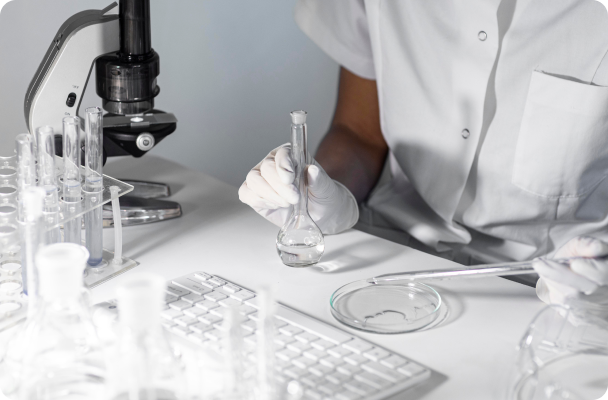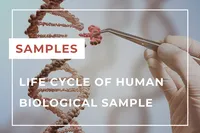Home › Biological sample › Infectious diseases › Staphylococcus
Staphylococcus biological samples
For research applications
The development of drugs and diagnostic tests for the treatment and detection of Staphylococcal infection requires conducting studies on biological samples obtained from patients infected by staphylococcus.
Here's a brief overview of various infectious diseases caused by staphylococcus and how the service provided by Labtoo contributes to accelerating R&D projects in the pharmaceutical industry.


Are you looking for biological samples from patients with Staphylococcus?
What are the different types of Staphylococci?
Staphylococci are aerobic Gram-positive microorganisms that frequently colonize the skin and external nasal mucosa in humans as well as animals. Although often considered harmless, they can become pathogenic by invading deep tissues of the body, such as the blood, bones, heart, or lungs. The ability of certain strains to develop antibiotic resistance poses a major challenge in the medical field.
Staphylococci can be transmitted in several ways: through skin infection when it enters an open wound, through vaginal infection, especially with prolonged use of tampons, or from child to mother through the breast during breastfeeding.
Staphylococci are numerous but can be classified based on their ability to produce coagulase, a specific enzyme responsible for the coagulation of blood plasma, referred to as:
Coagulase-positive Staphylococci
Coagulase-positive Staphylococci are generally the most pathogenic. There are several, but the most representative is Staphylococcus aureus, commonly known as golden staphylococcus. Golden staphylococcus is mainly transmitted through skin lesions or during surgical procedures and is a major cause of nosocomial infections (infections in a hospital setting), in conjunction with other pathogens such as Escherichia coli.
In addition to direct contact infections, golden staphylococcus can cause food poisoning when present in food through heat-resistant toxins it produces.
Coagulase-negative Staphylococci
Although Staphylococcus aureus is the most pathogenic, other coagulase-negative staphylococci, such as Staphylococcus epidermidis (white staphylococcus), can also cause diseases.
This type of staphylococcus often affects immunocompromised individuals or during the insertion of medical devices such as prostheses or grafts.
|
Staphylococci
|
Characteristic Symptoms
|
Affected Individuals
|
|---|---|---|
|
Staphylococcus aureus
|
- Skin infections
- Respiratory infections
-Food poisoning
-Systemic infections
|
All age groups, often individuals with weakened immune systems.
|
|
Staphylococcus epidermidis
|
- Device-associated infections
-Bloodstream infections
|
Mainly hospitalized individuals or those with implanted medical devices
|
|
Staphylococcus saprophyticus
|
Urinary tract infections (cystitis, pyelonephritis) in young sexually active women
|
Mainly young sexually active women
|
|
Staphylococcus haemolyticus
|
Device-associated infections
|
Mainly hospitalized individuals or those with implanted medical devices
|
|
Staphylococcus lugdunensis
|
- Skin and soft tissue infections
- Endocarditis
- Infections associated with catheters and prostheses
|
- Endocarditis
|

Explore Labtoo's Service for Your Biological Sample Research
Labtoo assists you in sourcing biological samples from patients with stahylococcal infections. Our team manages the entire project of transferring biological materials from inception to sample delivery.
- Feasibility assessment of sample availability or clinical collection from referenced clinical centers
- Validation of regulatory aspects
- Establishment of a contractual framework
- Dispatch of desired samples under appropriate conditions
- Transfer of associated clinical data
- Additional analytical and experimental services
Types of available samples
Urine
In the context of a urinary tract infection caused by a staphylococcus, a urine sample is collected to perform a cytobacteriological examination of urine (CBEU) in order to confirm the presence of the pathogenic agent. These samples can subsequently be preserved under appropriate conditions for future research projects.
Cerebrospinal fluid (CSF)
In severe cases of staphylococcal infection, particularly when meningitis is suspected, a cerebrospinal fluid (CSF) sample may be collected.
Respiratory swabs
The staphylococcus bacterium is often present in the nasal passages of individuals, even without infection. Therefore, a nasal swab can be taken to determine if staphylococcus is present in the patient's nasal passages.
Other
Other types of biological samples can be collected for studying Staphylococcus. Among them, samples of sputum or bronchoalveolar lavage fluid can be mentioned for patients with symptoms.
- Fresh Tissues: Dermal biopsy in the context of a skin infection caused by staphylococci, such as samples taken from wounds, abscesses, or boils.
- Frozen Tissues (OCT and FF)
- FFPE Tissues
- Whole blood: From patients with streptococcal infection, particularly those who have developed bacteremia.
- PBMC (Peripheral Blood Mononuclear Cells)
- Plasma
- Serum
Typical associated clinical data
-
- Age
- Gender
- Ethnicity
- Detection Method
- Serological result
- Bacterial Load
- Follow-up Treatment
- Simptomatology
- Medical Imaging
- Positivity/Negativity for certain Infections
- Other Data (upon request)

Labtoo identifies clinical sites that can prepare and transfer sample collections tailored to your specific project needs.
Contact our team to discuss your project.
Send your request to our team:
Symptoms of Staphylococcal infection
Symptoms of staphylococcal infection vary depending on the location and severity of the infection. Here are some examples of symptoms:
Fever and chills
Frequently observed symptom in numerous infectious pathologies.
Skin infections
There are typically characterized by the formation of boils or impetigo, a contagious and painful skin rash, often accompanied by suppuration.
Food intoxications
Symptoms typically manifest within hours following ingestion and include nausea, vomiting, low blood pressure, diarrhea, and dehydration. These effects usually diminish rapidly within approximately half a day.
A mastitis
Common in cases of breast infection. It is characterized by inflammation and the formation of abscesses in the breast.

Diagnosis and treatments of staphylococcus
The initial steps of diagnosis involve culturing a blood sample or other biofluid, followed by Gram staining to identify staphylococci.
In cases of suspected staphylococcal scalded skin syndrome, blood cultures, urine culture, and/or samples from the suspected infected area should be obtained.
Due to observed resistance in many strains, particularly to methicillin, an antibiogram is also conducted to guide the choice of appropriate antibiotic treatment against the infectious strain.
In cases of suspected osteomyelitis, medical imaging techniques such as X-ray, MRI, or bone scintigraphy are also utilized.
The choice of treatment depends on the site of infection, the severity of the illness, and the likelihood of antibiotic-resistant strains. Management typically involves abscess drainage, debridement of necrotic tissues, removal of foreign material in case of contamination, and administration of antibiotics.
Complications of staphylococcal infections
In cases of delayed or inadequate treatment of the infection, various potentially life-threatening complications may arise, including:
Staphylococcal Toxic Shock Syndrome
Similar to toxic shock caused by streptococci, it is triggered by a toxin produced by the bacterium.
Symptoms include sudden and high fever, a sunburn-like rash, headaches, muscle aches, vomiting, diarrhea, low blood pressure, and mental confusion.
This toxic shock is often associated with the use of menstrual tampons in women.
Staphylococcal Scalded Skin Syndrome
A rare and severe skin condition characterized by skin fragility, making it prone to detachment.
This syndrome manifests as blister formation, open wounds, and skin inflammation.
Patients with this syndrome often experience recurrent skin infections and may require intensive medical treatment
Pneumonia: Lung infection characterized by elevated body temperature, severe cough, breathing difficulties, and bloody sputum.
Endocarditis: Infection of the heart valves, which can lead to heart failure.
Osteomyelitis: Infection of the bone tissues, characterized by fever and bone pain.
Septicemia: Blood infection, which can lead to septic shock.



